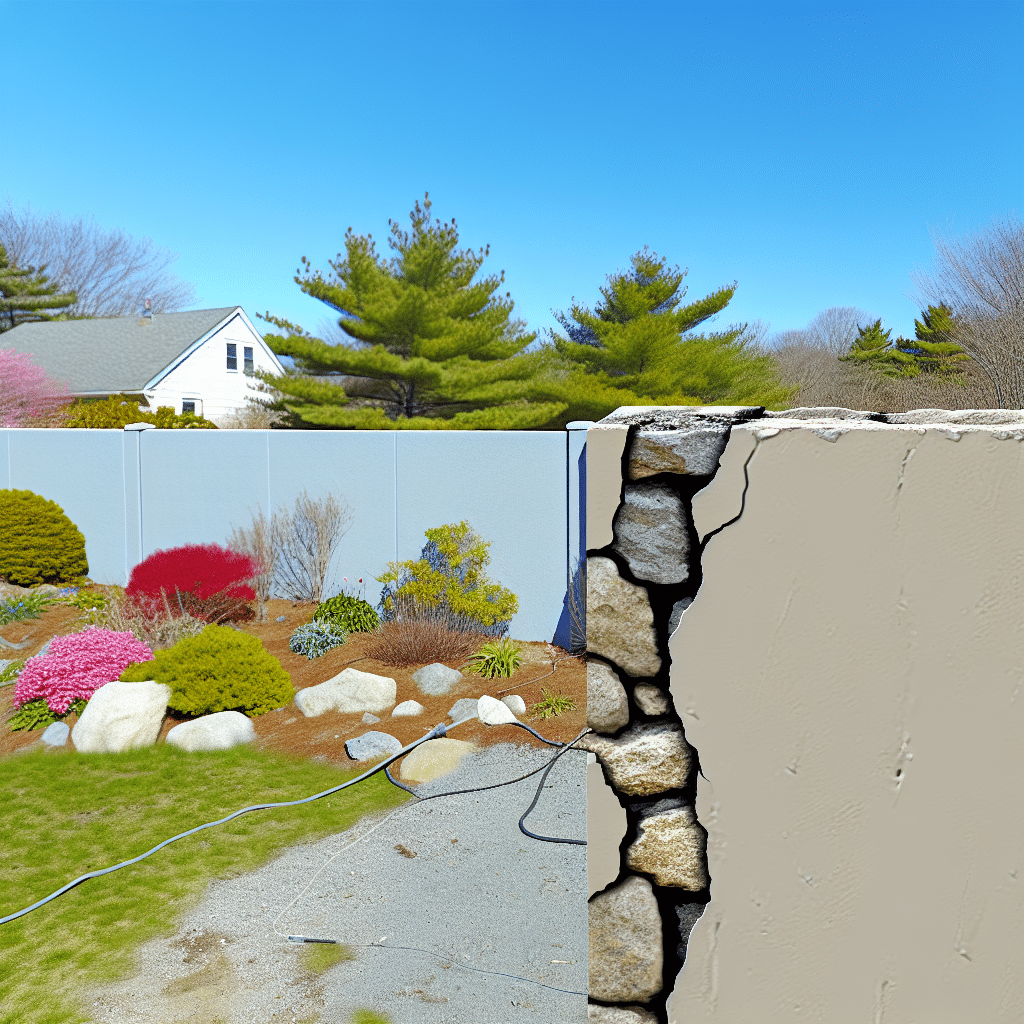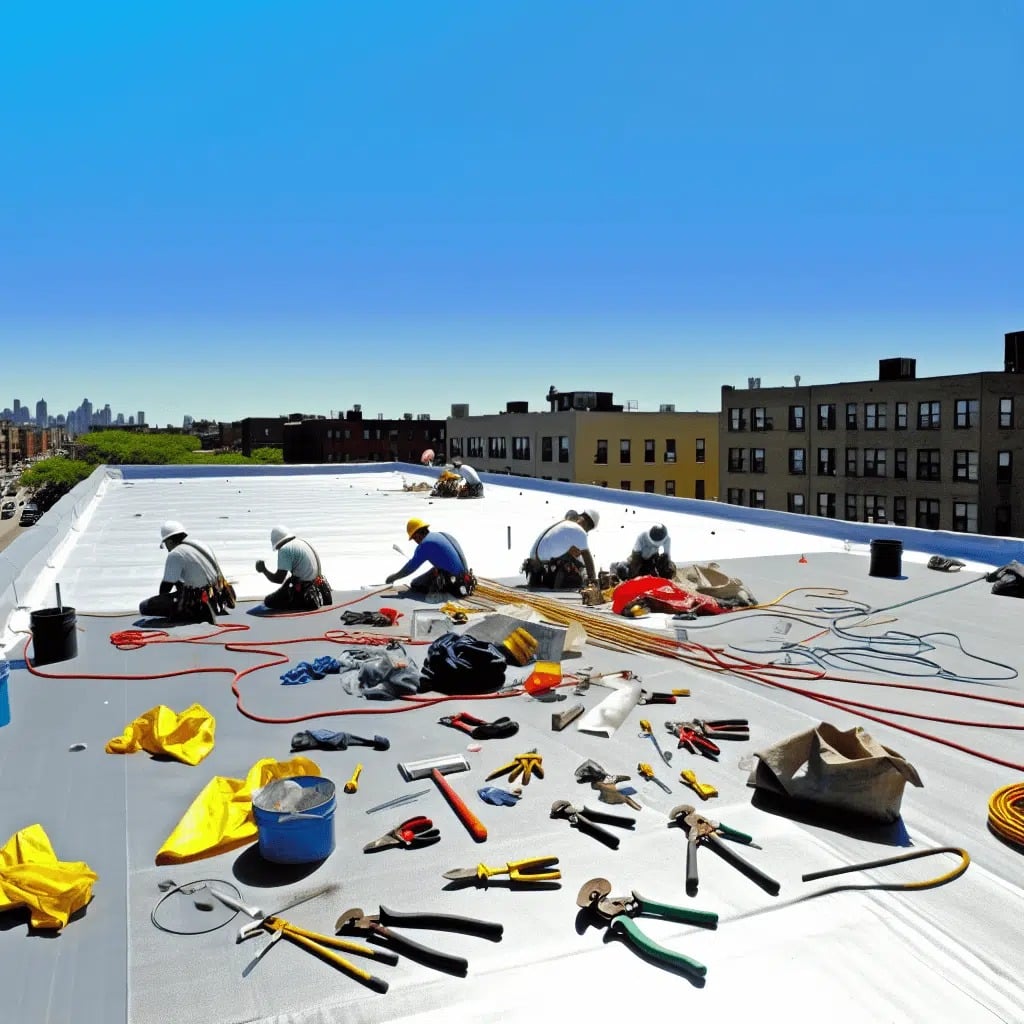Understanding Foundation Cracks: Immediate Action Required
Every year, homeowners in Cranston face the daunting challenge of foundation damage, a problem that escalates during the spring months. Neglecting even the smallest crack in your foundation can lead to extensive and expensive repairs down the line. It’s not just about aesthetics; these cracks can threaten the very integrity of your home. By understanding the immediate need for action, residents can save themselves from future headaches. Our homes are meant to be safe havens, and addressing structural concerns is paramount to ensuring they remain so.
The formation of foundation cracks can occur due to several reasons: natural settling of the house, environmental changes, or even poor construction practices. As the earth thaws and moisture levels fluctuate in spring, the ground expands and contracts, often leading to these worrisome fissures. Early detection and swift action are vital in preventing minor cracks from becoming gaping fractures. Therefore, it’s crucial for homeowners to stay vigilant and recognize the early warning signs to nip potential issues in the bud. Taking initiative now can make all the difference in preserving the life and value of your property.
Visual cues can often be the life-saving signal for your foundation’s health. Small chips or powder-like residue can signify that insignificant cracks are beginning to emerge. Left unattended, these cracks can evolve, permitting water to infiltrate, which leads to a cycle of freezing, thawing, and widening of existing cracks. This spring, take a moment to inspect your home’s exterior; it might just reveal the early stages of a problem demanding urgent attention. Remember, it’s not an overreaction to respond to the smallest indication; it’s a smart investment in your home’s future and your peace of mind.
Detect, Assess, and Act: A Deep Dive into Foundation Cracks
Understanding the genesis of foundation cracks is paramount. Varying soil composition combined with moisture changes can put stress on the foundation. Shifts in the soil and pressure from groundwater are magnified during spring’s unpredictable weather, leading to cracks. Early detection and qualification of these fractures are essential, as they can tell a lot about the attention your foundation needs. It is not only about identifying the crack but also understanding its root cause to tackle the issue effectively.
Educating yourself on the telltale signs of issues with your foundation can save you from larger inconveniences. Noticeable fissures on the exterior walls, doors that jam or fail to latch properly, and windows that stick or won’t close completely are common symptoms of foundation troubles. These signs often point to the need for a professional analysis to determine the best repair strategies. It’s recommended to seek expert guidance from trusted local services available, such as those offered on Rinaldi Roofing’s Residential Roofing page. The assistance from a knowledgeable contractor can be invaluable in diagnosing and remedying foundation concerns.
Choices for fixing foundation cracks range from simple sealant applications to more extensive structural repairs, depending on the severity of the issue. If cracks are caught early, they can often be repaired quickly and economically with the proper materials and techniques. Nonetheless, more severe cracks may warrant a comprehensive approach, including possibly underpinning the foundation for added stability. Understanding the options available for repair can be overwhelming; hence, allowing professionals to guide you through the process is beneficial. They can assess the specific needs of your foundation, giving you peace of mind that the structure of your home is secure.
Proactive Measures and Lasting Solutions
Preventing foundation cracks starts with recognizing the less obvious, yet critical signs that jeopardize your home’s structural integrity. Subtle signs, such as uneven floors, cracks in floor tiles, or doors that won’t stay shut, should ring alarm bells for homeowners. Proactivity is your best defense; scheduled inspections and maintenance can catch issues before they escalate. It’s not just about fixing problems; it’s about instituting a routine that prioritizes the longevity of your home’s foundation. These smart habits can translate into significant savings on repairs down the road.
Yet, when foundation cracks do surface, it’s critical to address them with informed decisions and trusted solutions. Options for repairs can run the gamut from epoxy injections for minor cracks to extensive pier and beam adjustments for more severe cases. Whatever the remedy, the goal remains constant: to secure the safety and stability of your living environment. Taking advantage of educational resources, like those found at Rinaldi Roofing, can ease the decision-making process. It’s in empowering yourself with knowledge that you find the confidence to make the best choices for your home.
To wrap up, foundation cracks in Cranston might be common, but they’re far from trivial. Each indicator, each crack, and each altering doorframe is a story your house is trying to tell you — typically, one of warning. Acknowledging these signs and responding with timely, appropriate action is fundamental to safeguarding your dwelling. If there’s uncertainty or a need for skilled intervention, don’t hesitate to seek out professional support. In the end, the peace of mind gained from a stable, crack-free foundation is invaluable for any homeowner.
Insights From The Experts
Tip 1:
Inspect your foundation regularly, especially after heavy rains or droughts. Look for new cracks or changes in existing ones, as these can indicate movement and the potential for significant damage.
Tip 2:
Don’t overlook minor cracks. Even though they may seem insignificant, small fissures can expand over time, leading to water intrusion and potentially severe structural problems.
Tip 3:
Maintain consistency in soil moisture around your home. During dry spells in Cranston, use a soaker hose to prevent the soil from contracting away from the foundation, which can cause cracking.
Tip 4:
Consider professional sealing for existing cracks. An expert can determine the best materials and methods to use, ensuring a durable and watertight repair that helps prevent future issues.
Tip 5:
Be landscape-savvy. Trees and plants near your home should be chosen and placed carefully to prevent root systems from damaging the foundation, which is a common cause of cracking.
Expert Answers to Your Foundation Queries
How can I tell if my foundation cracks are serious?
A crack that is wider than 1/4 inch, grows over time, or is accompanied by other signs of structural damage can indicate serious issues. Consulting with a structural engineer or foundation specialist is the most reliable way to assess the severity.
What are the best methods for repairing foundation cracks?
The most effective method depends on the crack’s size and cause, but options include epoxy or polyurethane injections for small cracks, and for larger issues, structural repairs like underpinning may be necessary.
Are small foundation cracks a sign of bigger problems?
While small cracks can be common due to settling, they should always be monitored, as they can indicate larger issues developing, especially if they change size or shape.
Can weather changes in Cranston, RI affect my foundation integrity?
Yes, the freeze-thaw cycle, heavy rains, and fluctuating temperatures in Cranston can cause soil expansion and contraction, leading to potential foundation cracking.
What preventive measures can I take to avoid foundation cracks?
Maintain consistent soil moisture levels around your home, ensure proper drainage, and conduct regular inspections to spot and address small issues before they escalate.



